How to Animate a Happy Fish Jumping Out of Water
Let’s try to animate one of the favorite classic scenes from Pinocchio: a happy fish jumping out of the water!
Now that we already know 8 of the 12 Basic Principles of Animation, it’s time to put our learning into practice!
Read on!
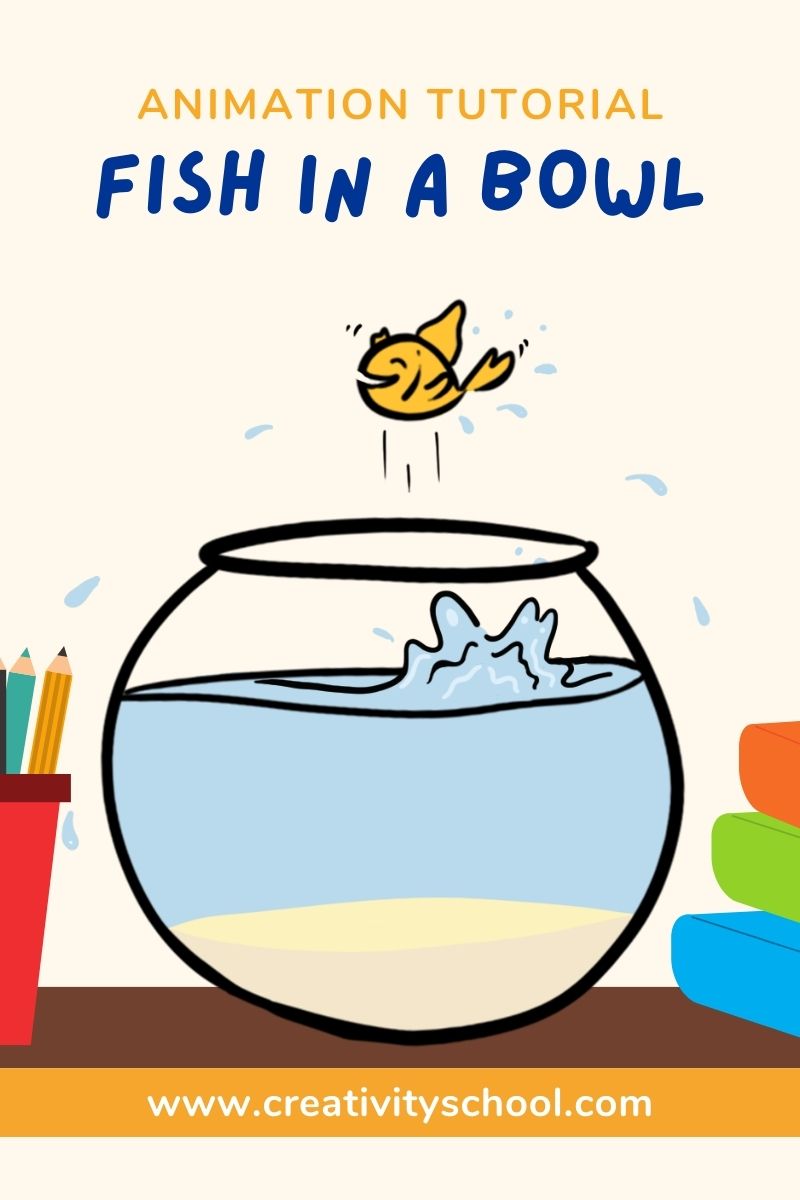
Recent Posts
Learn the Principles of Animation at Creativity School!
Let’s begin the animation journey of your kids and enhance their creative potential this 2021!
Our award-winning artists give away free LIVE art classes from the Creativity School.
Learn how to make animations, pop-up cards, draw ninjas, characters, paint, and much more!
Basic Principles of Animation
If you want to know how to animate, you need to learn the 12 basic principles of animation as outlined by Frank Thomas and Ollie Johnson in their book, The Illusion of Life.
These principles help us make our characters move as they exist in a real world with real physics at work.
In our previous blogs, we’ve already covered 8 out of the 12 basic principles. Here’s a review:
- Squash and Stretch – Squash is compressing an object to make it shorter but wider, and stretch means extending it to make it taller but narrower;
- Anticipation – these are the small actions that happen before the main action;
- Straight Ahead vs. Pose to Pose – Straight ahead means making your animation frames in sequence from start to finish. Pose-to-pose means planning out your keyframes first before adding the in-between poses or frames;
- Arcs – the path from where your animation will happen. In principle, arcs are based on the fact that all living things move in curved motions and not straight;
- Ease In/ Ease Out – Ease in is when you have more frames in the rest and anticipation positions while ease out is when you have fewer frames after the main action before returning to a rest position;
- Follow Through and Overlapping Action – Follow-through states that other parts aside from the main body continue to move after an action is completed. Overlapping action states that different parts of a body move at different rates.
- Exaggeration – is making an action really big;
- Appeal – is the quality of a subject’s overall design that makes them good or exciting to watch.
Happy Fish Jumping Out of Water Animation
Let’s make our jumping fish animation to apply the 8 basic principles that we learned.
Materials
- 8 pieces of small rectangular papers
- 1 pencil/pen
Instructions
I. Making a flipbook

Step 1. Fold and cut a paper (letter size) in four equal parts.

Step 2. Repeat step 1, then number the papers in the upper right corner from 1-8.
II. Drawing the frames

Step 1. On all eight frames, draw a fishbowl with water in the middle.

Step 2. Draw Frames 1-4.
For our animation, let’s use the Straight Ahead principle.
For all the frames, draw the movement of the fish in an arc, as shown by the blue line.
For Frame 1, draw the fish on the lower left side of the bowl with the face facing right. This is our resting/initial pose.
For Frame 2, draw the fish on the lower right side of the bowl. This is Anticipation pose 1 before the fish turns towards the water above.
For Frame 3, draw the fish on the upper right side of the bowl near the water with the face facing upward. This is Anticipation pose 2 before the jumping position.
For Frame 4, use the Squash principle and draw the fish near the middle and just below the water with the face facing left. This is Anticipation pose 3 before the fish jumps out of water.
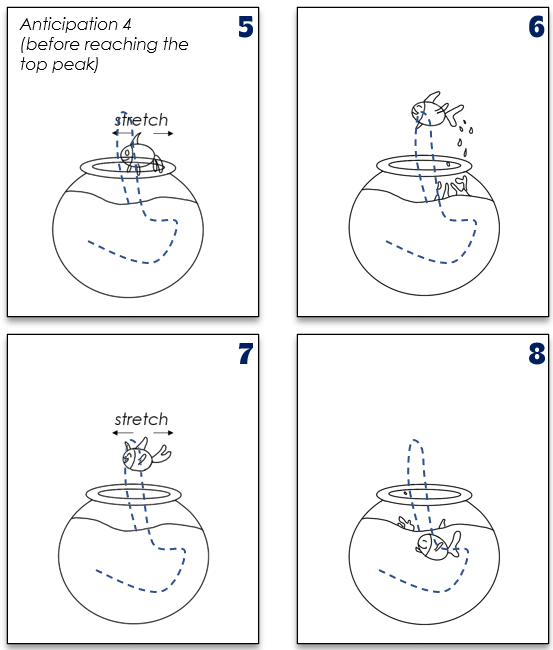
Step 3. Draw Frames 5-8.
For Frame 5, use the Stretch principle and draw the fish just above the lid of the bowl. This is Anticipation pose 4 before the fish reaches the top peak.
Frames 1-5 are the Ease In frames, which include the rest and Anticipation poses.
For Frame 6, draw the fish above the bowl. With the Follow Through and Overlapping Action principle, the water splashes upward in the direction of the fish.
For Frame 7, use the Stretch principle and draw the fish just below from where it is in Frame 6. This is the Ease Out pose.
For Frame 8, the fish goes back into the water. Draw it just below the water. With the Follow Through and Overlapping Action principle, the water splashes near the location of the fish.
On all frames, take note also of the positions of the tail and fins using again the Follow Through and Overlapping Action principle.
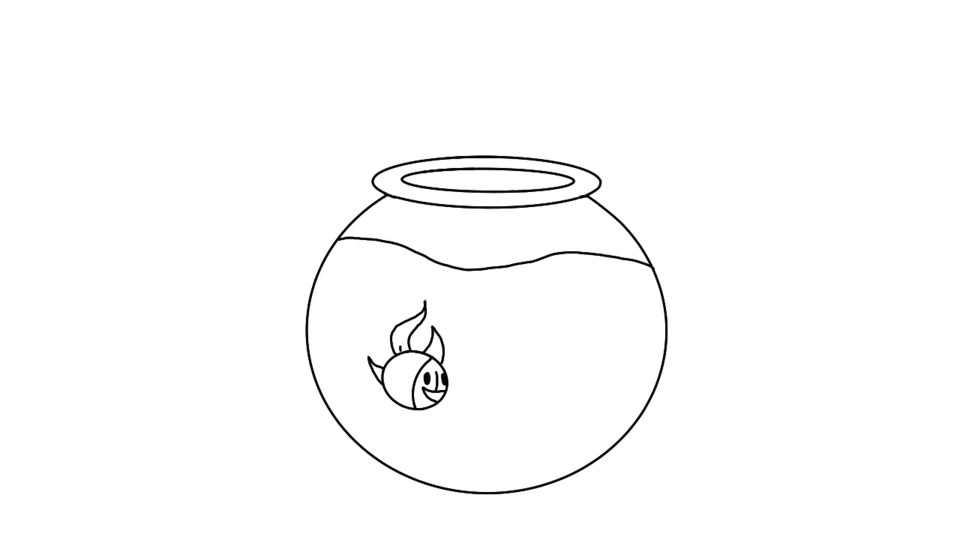
Step 4. Let’s flip it!
Arrange the papers with Frame 8 to Frame 1 at the bottom, then flip. The animation should look like the animation shown above.
Bravo! You’ve made your happy fish jump out of the water!
Tips for art-mazing success:
- If you want to do it digitally, try FlipaClip. It is an amazing app where you can do your animation just like a flipbook.
- Make some of the elements bigger to practice the Exaggeration principle. Here’s an example

- Add colors and other details to your animation to increase the Appeal. Here’s also an example.
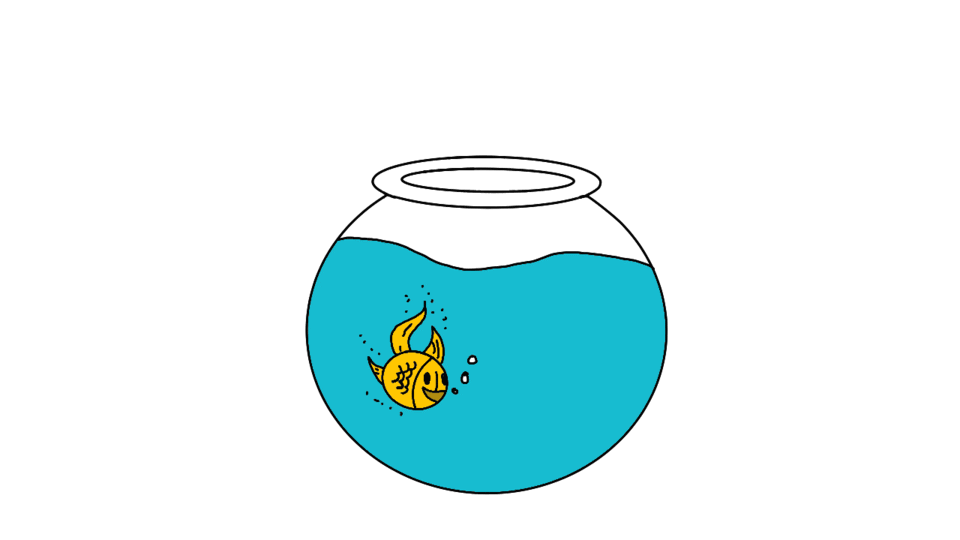
- Practice makes permanent! Re-learn 8 of the 12 Basic Principles of Animation from our previous animation blogs!
- Add more in-between frames for an even smoother transition.
Here are other happy fishes jumping out of their bowls made by our young artists (and a creative mom!) at the Creativity School.
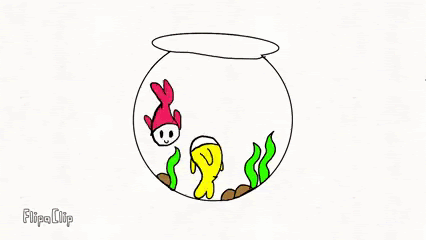
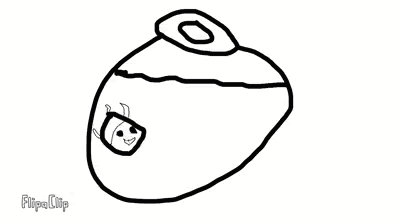

Animations from Creativity School by Sindu N. (top left), L S. (top right),
Chloe (bottom left), and Johan (bottom right)
Share with us in the comment section below your happy fish jumping out of water.
Be part of our Creativity School to know more about animation and other fun activities.
Creative Kids Live
- Celina G.
On Demand Class
—Miao
